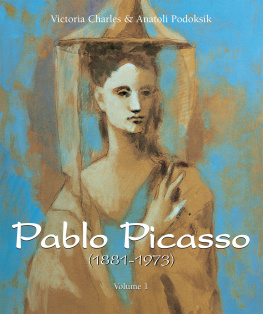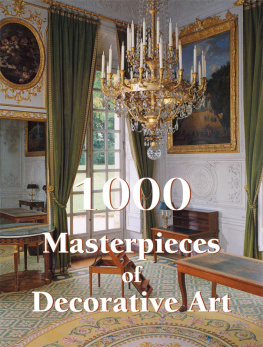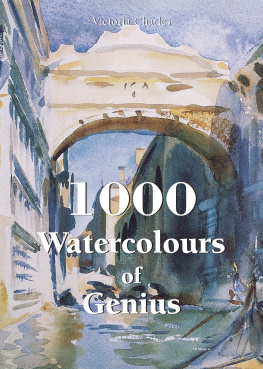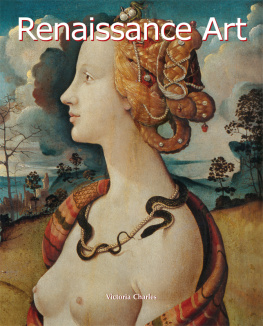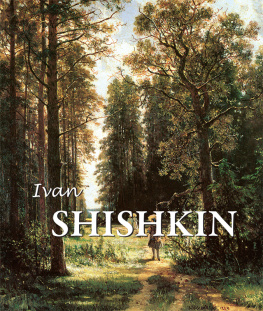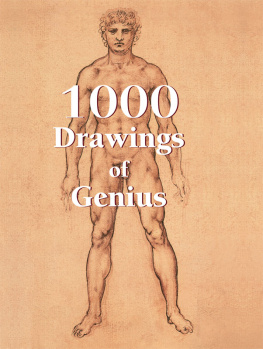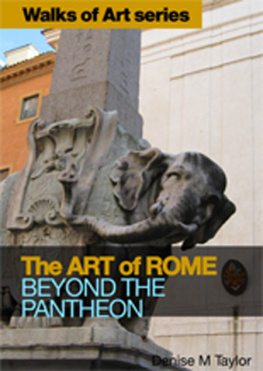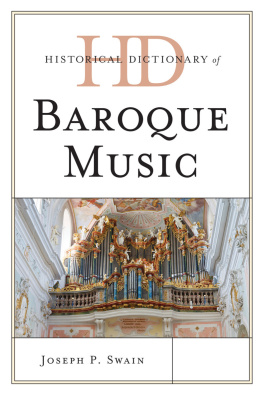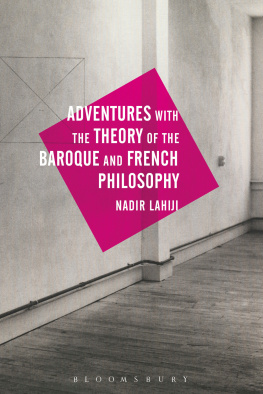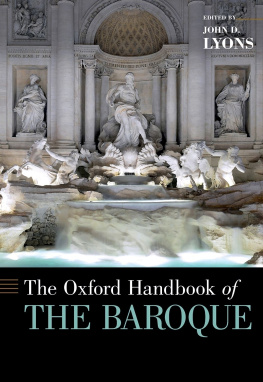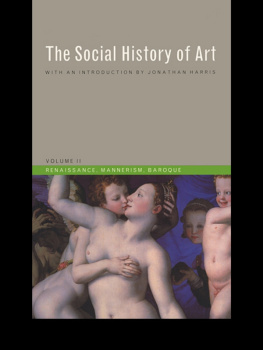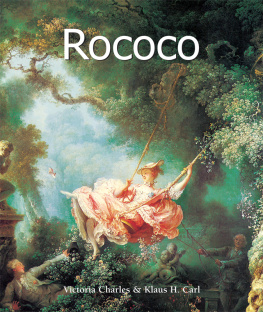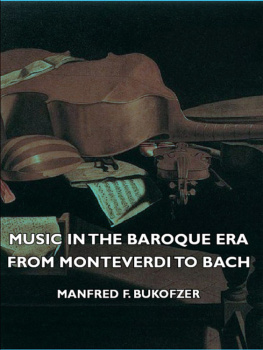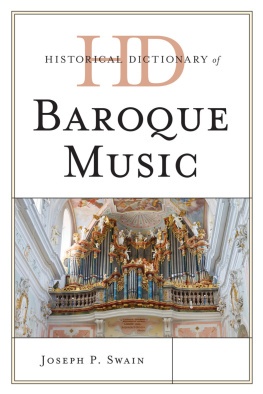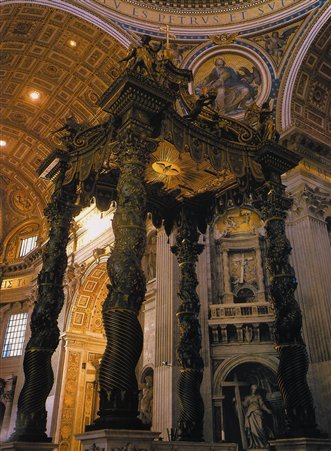Text: Klaus H. Carl and Victoria Charles
Baseline Co. Ltd
No part of this publication may be reproduced or adapted without the permission of the copyright holder, throughout the world. Unless otherwise specified, copyrights on the works reproduced lie with the respective photographers. Despite intensive research, it has not always been possible to establish copyright ownership. Where this is the case we would appreciate notification.
Klaus H. Carl & Victoria Charles
ordered in 1624 by Urban VIII.
St. Peter s Basilica, Vatican.
Introduction
Baroque art (derived from the Portuguese word Barrocco meaning rough or imperfect pearl) originated in Italy and a few other countries as an imperceptible passage from the late Renaissance which ended about 1600. It was occasionally seen as a variation and brutalization of the Renaissance style and sometimes conversely as a higher form of its development, and remained dominant until approximately the middle of the eighteenth century. Conventionally, the Baroque style is not emphasized in the global history of art, because the time period when it flourished between 1550 and 1750 is correctly viewed as an enclosed time period in which various directions of style were expressed.
For some specialists, the Baroque style, because it adapted to the strict forms of the Renaissance, was strictly nothing other than a branch or a variant of the Renaissance art from which it arose. This is how it was for all changes of style in the history of art: each new direction built on the foundations of the previous one. The Gothic style followed from the Romantic which adapted from the Old Christian, and so on. Since the time when Hellenic art ruled the world, it served as a measure and foundation for the subsequent style developments, which only more or less distance themselves from it or else imitate it.
However, the Baroque style distanced itself from the strict principles and theories of the Antique so much that the Antique fundamentals were hardly recognizable. It is difficult to draw a distinctive line between the Renaissance and the Baroque, as both schools merge into each other. However, the Baroque cannot simply be limited to a specific timeline or location. Moreover, one can only strictly speak of a proper Baroque style in the fields of architecture and perhaps sculpture.
The Baroque period occurred during an era of deep religious, cultural and social unrest. Wars, the Reformation and other confusions resulted in a new political order and complicated spiritual and cultural development. The medieval system of government slowly dissolved between 1520 and 1530, and the Reformation had its indelible effect on the people as the imperial princes became more and more powerful.
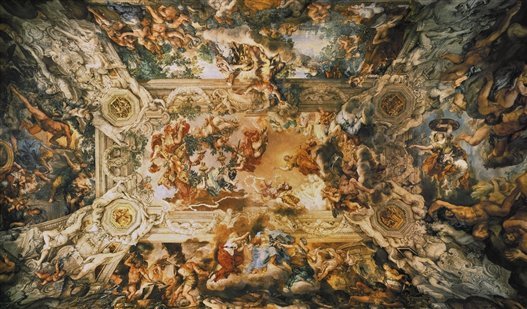
2. Pietro Berrettini, also known as Pietro da Cortona,
Allegory of Divine Providence,
1633-1639. Fresco. Palazzo Barberini, Rome.
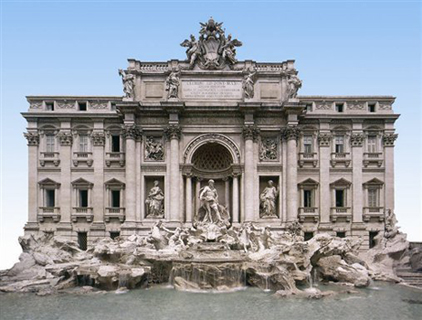
3. Niccol Salvi (finished by Niccol Pannini),
Trevi Fountain,
1732-1762. Marble. Piazza di Trevi, Rome.
The German imperial crown hardly played a legal role; it only possessed a more or less representative function gladly carried out by the House of Habsburg. In Austria the Habsburgs had occupied the area of Krain (current Slovenia), Krnten (Carinthia) and Tyrol and, after long internal strife from the end of the fifteenth century into the 1690s, combined them into a single state to withstand the onslaught of the Ottomans. It was only the famous Prince Eugene of Savoy who succeeded in defeating the Turks at the battle of Zenta in 1697. This victory was memorialized by Ferdinand Freiligrath in a poem later set to music by Johann Gottfried Loewe: Prinz Eugen, der edle Ritter, / hei das klingt wie Ungewitter / Weit ins Trkenlager hin.
From a historical point of view, the seventeenth century began with the end of the glorious reign of the English Queen Elizabeth I and the civil wars in France by Henry IV. In Italian art, Caravaggio created a new style; in Spain, Miguel de Cervantes wrote Don Quixote; and in England, Shakespeare became world-famous with his dramas.
The Thirty Years War raged in the Holy Roman Empire of the German Nation and laid waste to half of Europe. Among the decisive personalities in this war were the Swedish King Gustav II, who fell during the war, and the most important army leader, Albrecht von Wallenstein, who was murdered in 1694 in Eger. Cardinal Richelieu, under Louis XIII, secured the supremacy of France in Europe, and Oliver Cromwell ruled the Republic in England. In Flanders, Rubens and Rembrandt were making their marks on the art world, in France Molire wrote his comedies, and in Italy Bernini defined new paths in sculpture and architecture. It was a very eventful and turbulent century.
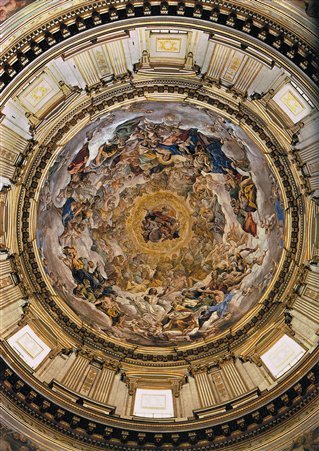
4. Giovanni Lanfranco, Paradise, 1641-1643.
Fresco. Cappella San Gennaro,
Cattedrale di Napoli, Naples.
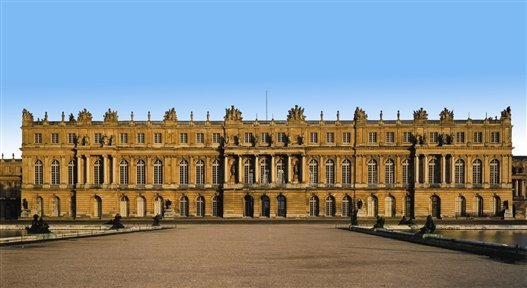
5. Louis Le Vau and Jules Hardouin-Mansart,
Versailles Palace,
faade with view of the gardens , 1661-1690. Versailles.
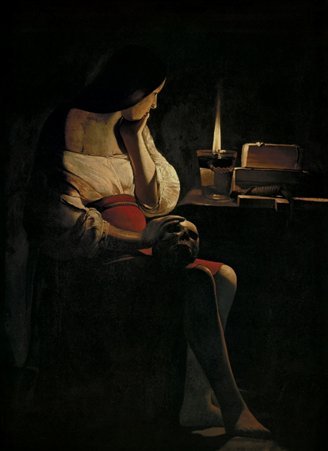
6. Georges de La Tour, Magdalene of the Night Light,
c. 1640-1645.
Oil on canvas, 128 x cm . Muse du Louvre, Paris.
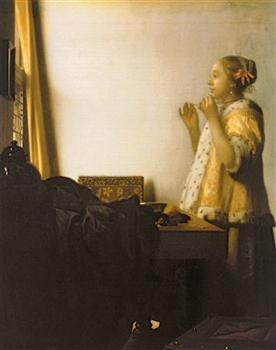
7. Johannes Vermeer, Woman with a Pearl Necklace,
c. 1664. Oil on canvas, 55 x cm .
Gemldegalerie, Staatliche Museen zu Berlin, Berlin.
The very influential classes of society, with their special political rights, lost their influence and privileges during the war. Only the princes governed their respective areas with unlimited power. The situation of the arts and culture in their lands changed according to the personalities, the wisdom and the farsightedness of the respective princes.
From the founding of the Kingdom of Prussia in January 1701, the emphasis of artistic, political and economic life moved from Southern to Northern Germany. The wars and unrest resulted in the impoverishment of the masses, the middle classes and even the nobles. In addition, the wars brutalized customs to such an extent that there was no place for the arts. Only the princes still living in its pomp and splendour could afford objects of art. Their example was the French Court; the residence cities of the princes envied the French and their opulently magnificent buildings with beautiful artistic treasures.


